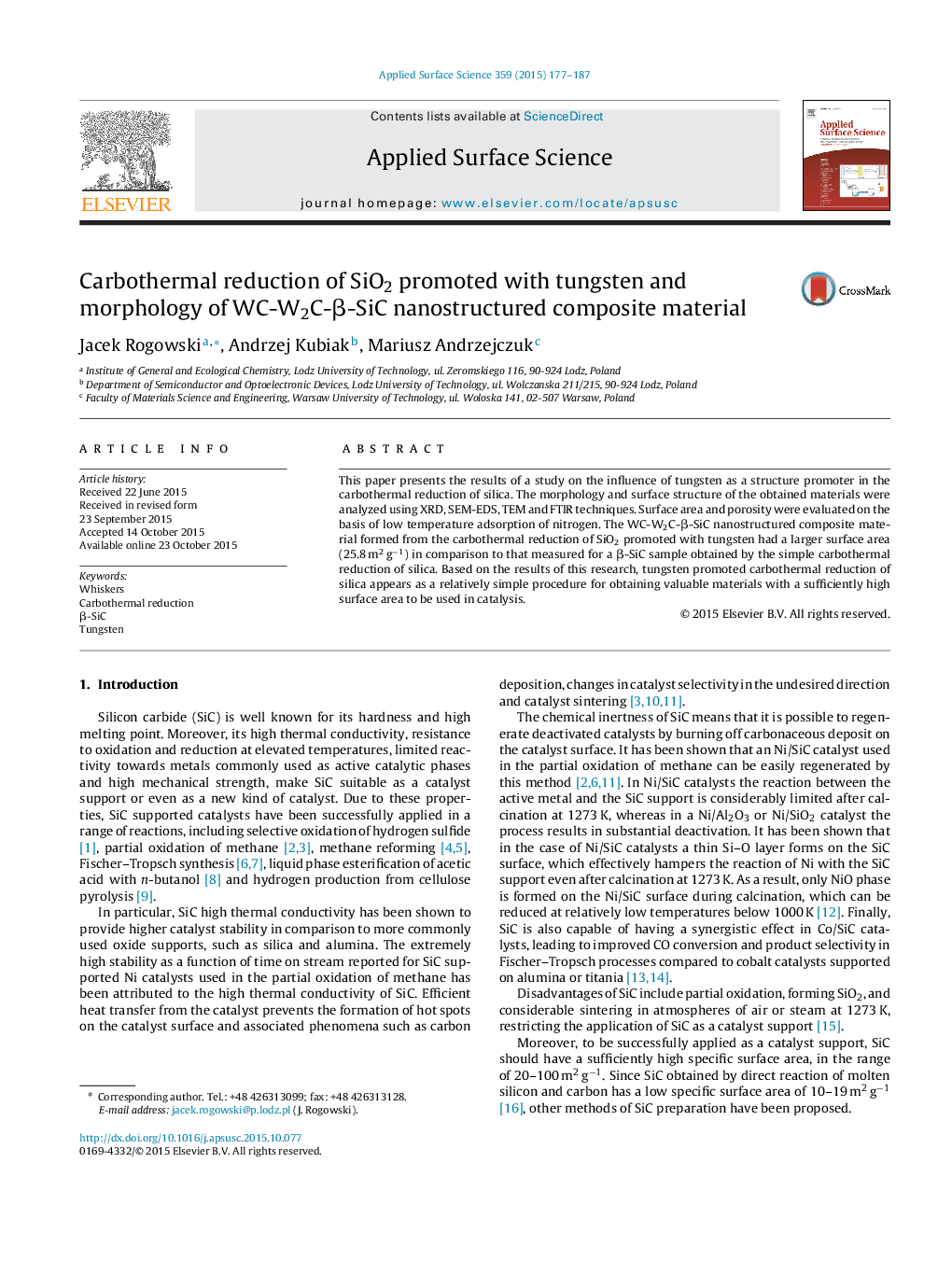| Article ID | Journal | Published Year | Pages | File Type |
|---|---|---|---|---|
| 5357476 | Applied Surface Science | 2015 | 11 Pages |
Abstract
This paper presents the results of a study on the influence of tungsten as a structure promoter in the carbothermal reduction of silica. The morphology and surface structure of the obtained materials were analyzed using XRD, SEM-EDS, TEM and FTIR techniques. Surface area and porosity were evaluated on the basis of low temperature adsorption of nitrogen. The WC-W2C-β-SiC nanostructured composite material formed from the carbothermal reduction of SiO2 promoted with tungsten had a larger surface area (25.8 m2 gâ1) in comparison to that measured for a β-SiC sample obtained by the simple carbothermal reduction of silica. Based on the results of this research, tungsten promoted carbothermal reduction of silica appears as a relatively simple procedure for obtaining valuable materials with a sufficiently high surface area to be used in catalysis.
Related Topics
Physical Sciences and Engineering
Chemistry
Physical and Theoretical Chemistry
Authors
Jacek Rogowski, Andrzej Kubiak, Mariusz Andrzejczuk,
